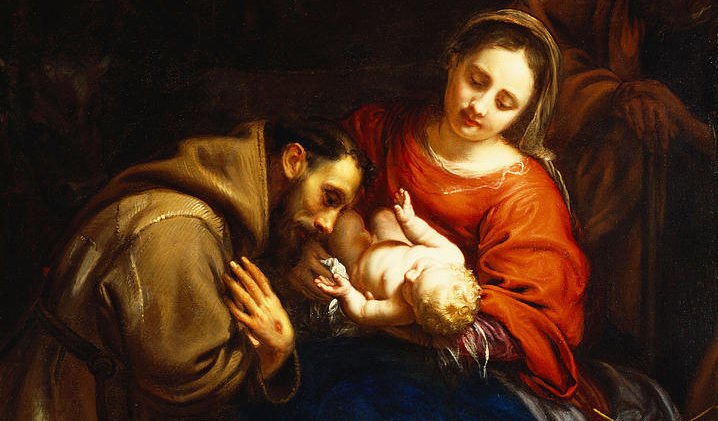
Many people want to ask: “Are we allowed to do this?”
Let’s sort through it.
In 1959, Pope (a saint now) Saint John XXIII, at the celebration of Holy Week, at the Station of St. John Lateran, went down and had the Liturgy on Good Friday. Exactly where all the relics are, the true cross, the plaques with the three titles, and the nails are there. A magnificent place to visit and pray.
He went there, and at that time, he followed the traditional practice, thus making it evident that he disagreed with the innovations recently introduced. He recognized the experimental nature of those changes.
We have a picture of it on the website’s front page (www.pre1955holyweek.com). St. John XXIII was kneeling before the steps where the cross was laid.
In English, we call it “the creeping,” where you do these three prostrations before you kiss the cross; and you have Pope Saint John XXIII right there doing it.
The [reform] had been implemented five years before, in 1955.
Why was he doing that? Because it was experimental, he knew it and disagreed with it.
Almost nobody agreed with it.It was offensive to so many Cardinals and clerics at the time that they would touch Holy Week.
Now there’s a place in Rome called The Holy of Holies.
The Holy Stairs are right across from Saint John Lateran Church and when you get to the top of the Holy Stairs, you get up there’s that weird window. It’s got bars in front of it you’re like, “what’s that there for?”, that’s the Holy of Holies.
I don’t know if you read the plaque on the side but that’s the Holy of Holies.
Many of the Holy Week rituals used in the Roman Rite were perfected in that room.
That’s where the great relics were kept.
That’s where the papal liturgies took place and when you go in there, you go in only on your knees and I think they let lay people in there now.
It’s old, it’s very old in there and many holy things have happened; that’s why it’s called the Holy of Holies, one because of all the great relics that were there and an image of Our Lord that’s kept in there but also because of the sacred things that were developed in there that we use even to this day in Holy Week, the holy of holies, the untouchable.
What Pope Benedict wrote just recently, “What earlier generations held as sacred, remains sacred and great for us too, and it cannot be all of a sudden entirely forbidden or even considered harmful. It behooves all of us to preserve the riches which have developed in the Church’s faith and prayer, and to give them their proper place.”(Summorum Pontificum), this is considered papal magisterium, it was actually accepted into the new Denzinger edition.
Now, I knew the good Priest who contributed most to the document called Universae Ecclesiae.
I mentored under him as a Master of Ceremonies in Rome and I was there talking to him about old Holy Week while he was writing that document.
I don’t know if you know Universae Ecclesiae, but it was the regulatory letter for Summorum Pontificum.
Remember, three years after the Motu Proprio this other letter was supposed to come to regulate some things.
Pope Benedict when he was Cardinal Ratzinger, when he went to the Fraternity of Saint Peter once to do Holy Week, spend Holy Week with him, first thing he asked when he got out of the car because he got met by the Master of Ceremonies, “Which Holy Week will we be using?”
Master of Ceremonies(Author of Universae Ecclesiae: “Of course the one from ’62”.
And he[Pope Benedict XVI] said: “Why are you doing that?
So he knew the mind of the lawmaker when he wrote:
The Sacred Triduum
33. If there is a qualified priest, a coetus fidelium (“group of faithful”), which follows the older liturgical tradition, can also celebrate the Sacred Triduum in the forma extraordinaria.
Now in 2011 Pope Benedict at Saint Peter’s Basilica, the Vigil Mass on Holy Saturday, in his homily he spoke of traditional Holy Week as “before the reform, when there were 12 Old Testament readings” “before the reform”, helping us to to more clearly understand the reference in Universae Ecclesiae, in the one just above it, as the old traditional liturgy, the older traditional liturgy.
PO Box 1054
Lawrenceburg, KY 40342 – USA
romanseraphicbooks@protonmail.com
